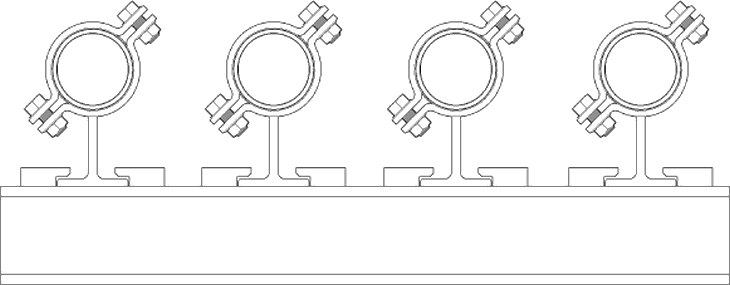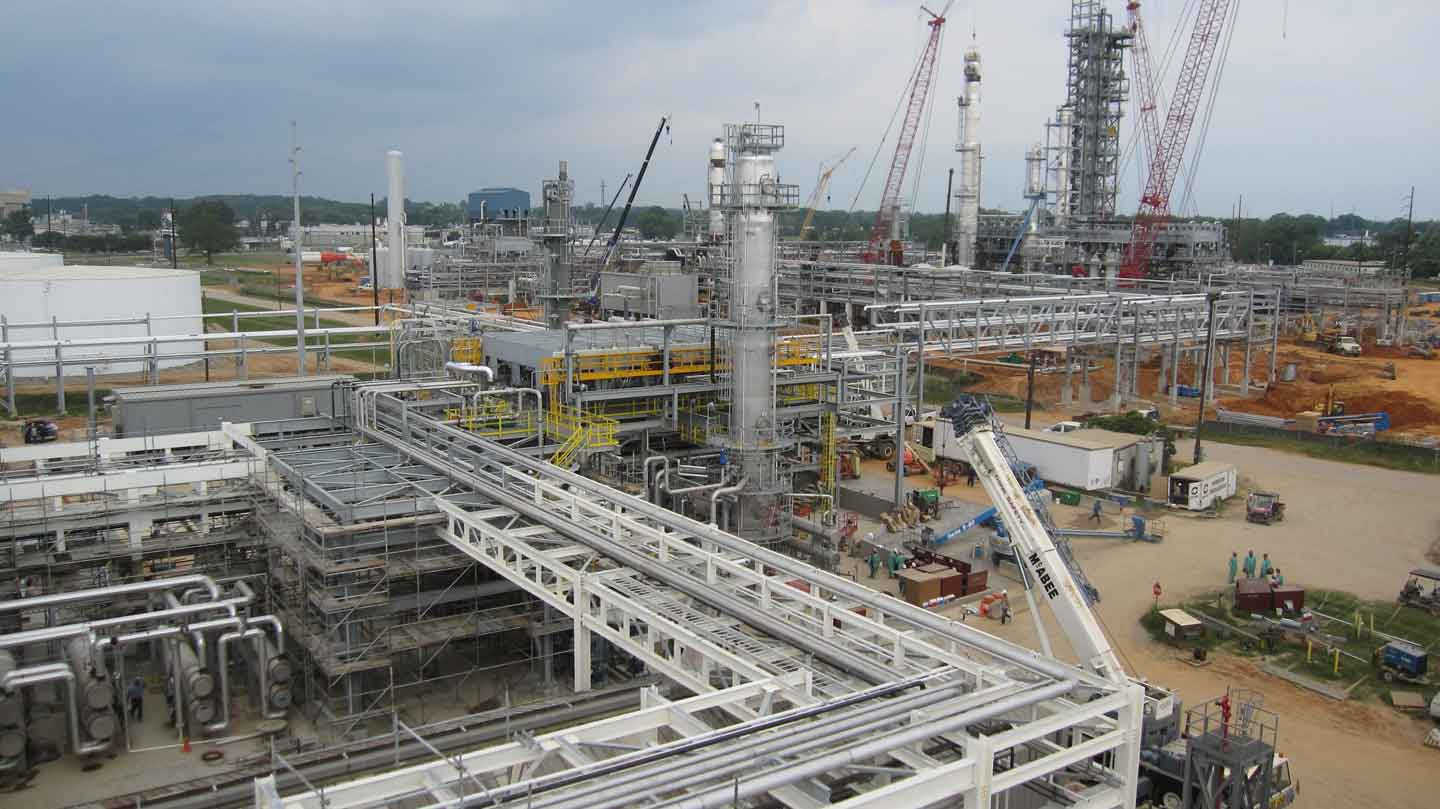 |
Pipe Racks |
PIPE RACKS OR PIPE BRIDGES are structures designed and built specifically to support multiple pipes where adequate structure is not available. Pipe layout on pipe racks should follow the Pipe Planning Study concepts, which established in the preliminary engineering phase of a project.
Destination of a Pipe Rack
Pipe racks are necessary for arranging the process and service pipelines throughout the plant. A
large number of process pipelines, flare lines and manifold lines running through this racks
from one equipment to another, or from one unit to another.
Also attached is piping, leading to the utility group, such as water, steam, condensate, working air,
instrumentation air and nitrogen.
Electrical power cables supported by cable ducts are also placed in the pipe rack, but separate from
the pipelines. Air-cooled Heat Exchangers are often supported above pipe racks for economy of plot
space.
A pipe rack is usually constructed of Hot-dip galvanized steel or concrete frames called bents, on
top of which the pipeline rests.
Pipe racks are typically multi level. Pipes in a pipe rack are normally at a height where it is possible
to walk underneath.
They are designed so that the clearance under the rack is sufficiently high that mobile lifting equipment
can operate under the rack for maintenance purposes.
Some Pipe Rack specifications
Safety
- IN ALL SITUATIONS ESCAPE ROUTES MUST BE PRESENT
Minimum head height
- Between walkways and pipe racks always a clear space must be so that on a natural way can be walked.
There should be an option
- to give cranes and heavy transport access to equipment.
- to give people access to equipment, instrumentation, fire fighting equipment etc..
- to give access to plant-operators and maintenance workers.
Ladders and Platforms
- Ladders and platforms are standardized for a project. Each stage or step should be the same distance. Platforms should always have a minimum width.
Pipe routing in a Pipe Rack
- All piping shall be routed so as to provide a simple, neat and economical layout, allowing for easy support and adequate flexibility.
- Piping should be arranged on horizontal racks at specific elevations. When changing direction (from longitudinal to transverse or vice versa) the piping should change elevation, but care shall be taken to avoid pockets. No piping shall be located inside instrument, electrical or telecommunication control/switchgear rooms, except fire fighting piping serving these rooms.
- Rack piping shall be designed with expansion loops capable of handling relative movement of platforms in design storm conditions.
- Cold and hot piping should be grouped separately with hot, non insulated, lines at a higher elevation than cold lines. Uninsulated lines with possibility for ice build-up, shall not be run above walk ways.
- When expansion loops are required, lines should be grouped together and located on the outside of the rack.
- Small pipes should be grouped together to simplify support design.
- Locating small pipes between large pipes shall be avoided especially when the large lines are hot.
- To save space and for economic reasons, clamped pipe supports at an angle of 45 degrees should be used. (see image below)

- Heaviest lines should be located furthest from centre of the rack.
- Sloping pipes, such as flare headers and drain lines, should be located together and the routing established at an early stage in the design period to prevent difficulties which may occur if other process and utility lines are routed first.
- Utility headers for water, steam, air, etc. shall be arranged on the top of multi-tiered pipe racks.
- All Valves requiring operation during normal or emergency conditions shall be accessible from a deck or platform.
- Isolation Valves shall preferably be accessible from deck or platform. However, if this is not possible, Valves shall be positioned such that access from temporary facilities is obtained.
- Fire water ring main isolation Valves shall always be accessible from deck or platform.
- Pressure relief devices (Relief Valves, rupture discs) shall be accessible and installed for easy removal from deck or permanent platform. Relief Valves shall be installed with the stem in the vertical position. Other Valves may be tilted, as long as the stem is above horizontal position.
- When ESD Valves are installed as isolation Valves, they shall be located as close as possible to the fire/blast partition.
Interesting articles
Related Post(s)

In the context of oil and gas, pipe sleepers are structural supports at nearly level, designed specifically to support horizontal pipelines...
